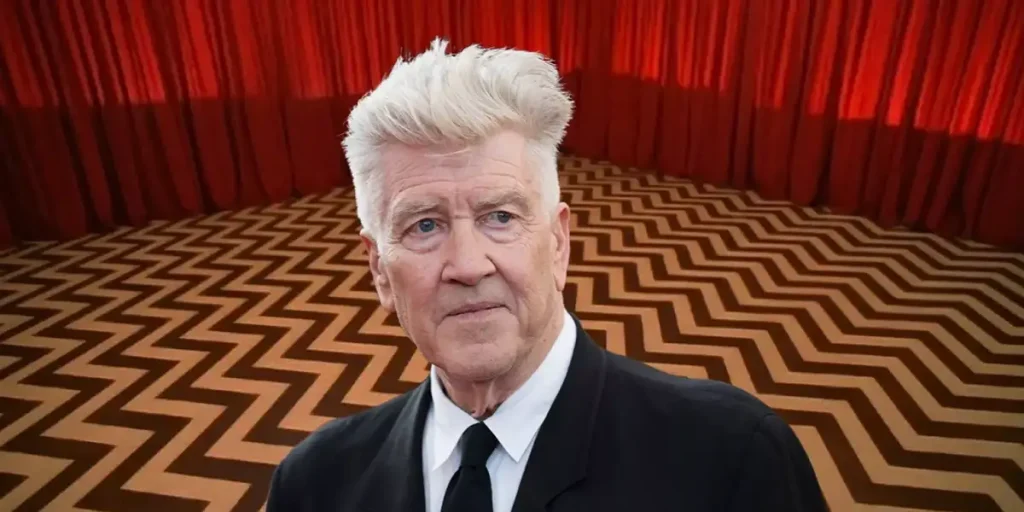Mixing views on transcendent meditation with Christian symbolism, David Lynch explored religion in his films by highlighting darkness and light.
The world lost one of its truly gifted artists in David Lynch back in January. Aside from being technically brilliant, establishing his own filmmaking style immediately with his debut film Eraserhead (1977), Lynch also undeniably used his films as a way to ask the most foundational spiritual questions. His movies stare in the face of the evil in the world and the evil — I don’t know if he would say “sin,” but I will — we hold in our own souls. Lynch’s Presbyterian background and his transcendental meditation practices can be seen throughout his work, as he struggles between darkness and light and longs for something beyond earthly existence.
Darkness
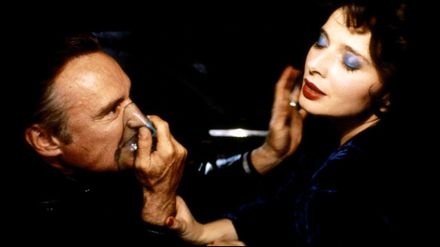
Many people associate the films of David Lynch with a sense of surreal, uncompromising darkness. Images of mystery men, phantoms in the hallway, and disgusting sperm babies are forever etched into our collective subconscious. These characters and shots haunt us, possibly because we recognize that darkness within ourselves.
Lynch’s 1986 masterpiece Blue Velvet is perhaps his most important work in terms of discerning his worldview. The film stares down the barrel of humanity’s worst tendencies in the character of Frank Booth (Dennis Hopper). Booth, a psychotic drug kingpin who repeatedly abuses singer Dorothy Vallens (Isabella Rossellini) and abducts and terrorizes the film’s protagonist Jeffrey Beaumont (Kyle MacLachlan), represents man at his absolute worst. Booth, Beaumont’s arc, and Blue Velvet more broadly (a film which takes place in the seemingly beautiful and idyllic small town of Lumberton, North Carolina), is Lynch’s way of warning that darkness looms large in every town and every individual.
2001’s Mulholland Drive reveals how humanity’s darkness has seeped into our institutions. The film, among many other interpretations, is about the corruption of Hollywood. What begins as a young actress’s (Naomi Watts) optimistic journey to Tinseltown quickly devolves into a nightmare. While Watts’s Betty strikes up an unlikely acquaintance with Rita (Laura Harring) after the latter is involved in a car accident, a bulk of the story involves film directors, mobsters, and others within the Hollywood system all acting for their own self interests. In the process, the film’s source of joy and light, Betty, is increasingly taken advantage of and slips further and further into darkness. The loss of creativity and personality in Hollywood is a key theme. In the famous “Club Silencio” scene, Betty and Rita attend a performance where a man states, “it is all an illusion.” Everything in Hollywood has become a cheap ploy, thanks to the darkness within people of power.
Though Lynch has stated we all know a Frank Booth in our lives, maybe the exaggerated nature of the darkness depicted in Blue Velvet or Mulholland Drive seems a little distant to common folk like us. But that doesn’t mean darkness has eluded us, or that we have not inflicted that darkness onto others. Lynch indictes the everyday darkness we are capable of with The Elephant Man, a story about a deformed man facing the unnecessary abuse of the masses simply for his appearance. The harrowing scene where John Merrick (John Hurt) is cornered in the train station by a mob — to which he screams “I am not an animal!” — asks us to reflect on how we treat people who look and act differently from ourselves. It’s a blunt reminder to examine the potential darkness of bigotry and hate that might be lurking within us.
These images and seemingly pessimistic views shroud Lynch’s work in a cloud of darkness. People may assume, then, that Lynch’s films are only concerned about that darkness. However, if that were all his movies had to offer, I do not think they would hold the same staying power that they do. What makes his filmography special, aside from exploring the darkness, is the simultaneous search for light.
Light
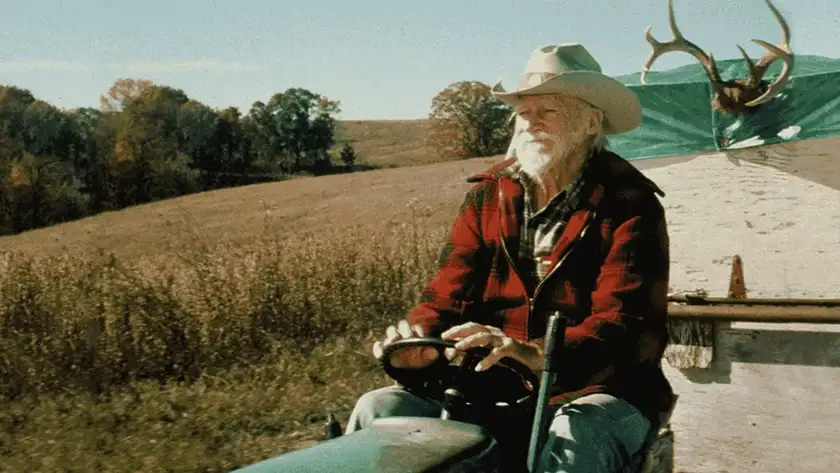
Within some of the very same films that produce such horrific depictions of darkness, Lynch infuses beautiful respones of light, showcasing at least a dose of hope for humanity. Despite the horrible acts of violence and abuse shown in Blue Velvet, Lynch upends the traditional neo-noir denouement by giving each of his main characters a happy ending. Jeffrey is forgiven by his love interest (Laura Dern) as the two begin a new relationship, while Dorothy is reunited with her son. Light from a beautiful spring sun shines down on the town, in stark contrast to the dark night that envelops much of the film. It’s a shockingly optimistic note to end a movie that felt so pessimistic about the state of humanity.
The Straight Story — a movie many forget Lynch directed — is a touching portrait of persistence in the face of difficulty. In the film, Alvin Straight (Richard Farnsworth) travels via lawn mower from Iowa to Wisconsin to visit his ailing brother (Harry Dean Stanton). The film features none of the surrealist imagery fans have come to expect from Lynch, focusing instead on intimate conversations and realistic storytelling in the vein of Ernest Hemingway (as the great Roger Ebert acknowledged). In a way, The Straight Story is Lynch’s most straightforward representation of humanity, and the cinematography is noticeably brighter. There is still “darkness” in that characters sometimes act in their own self interests, and that concepts like death and decay are all-too-real, but there is a beauty to the human spirit that Lynch captures, especially with Farnsworth and his performance, that should feel reassuring to viewers who may feel the darkness is too much to overcome.
Lynch is clearly not afraid to go dark, but this decision is intentional to exploring the countering light. Lynch’s work suggests one cannot exist without the other, meaning some type of balance is required.
Balance
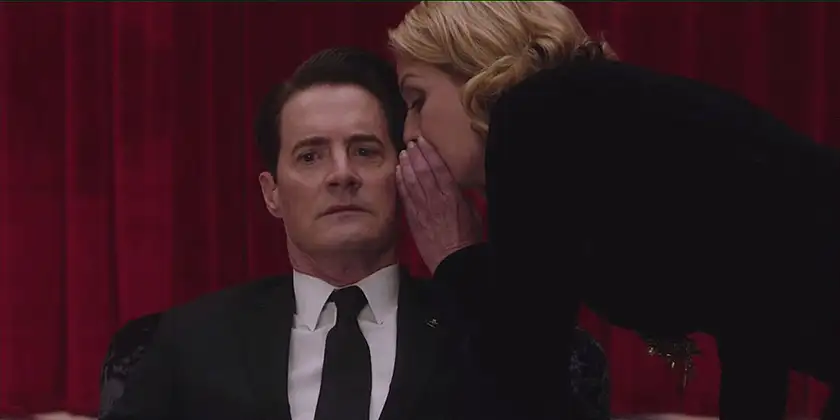
With concepts of darkness and light present throughout his work, Lynch seemed focused on finding and understanding the balance between good and evil. Balance is a core component of transcendental meditation, so, as a strong practicer of the technique, Lynch explores balance within his filmography.
Twin Peaks, arguably Lynch’s greatest achievement, holds some of the answers on his approach. The revolutionary TV series shows a small town dealing with the aftermath of a terrible murder involving local high school student, Laura Palmer (Sheryl Lee). The show spectacularly balances light and darkness by highlighting both the goodness and evil within its characters. The duality of humankind is on full display, adding a level of reality to Lynch’s soap opera. Plenty of surreal scenes are here, too, as well as supernatural elements like ghosts, demons, or whatever BOB (an otherworldly being that seeks to inhabit the bodies of the townspeople) is. Over the course of three seasons and a feature film, Lynch carries this idea of balance as far as he can take it in attempt to solve this spiritual mystery of the coexistence between good and evil.
The balance between darkness and light is a question every major religion must grapple with. Religions that believe in an all-good, all-loving God wrestle with how that God allows evil to enter the world. Lynch may not put it in such terms, but his work boils down to this essential religious question.
David Lynch’s Longing
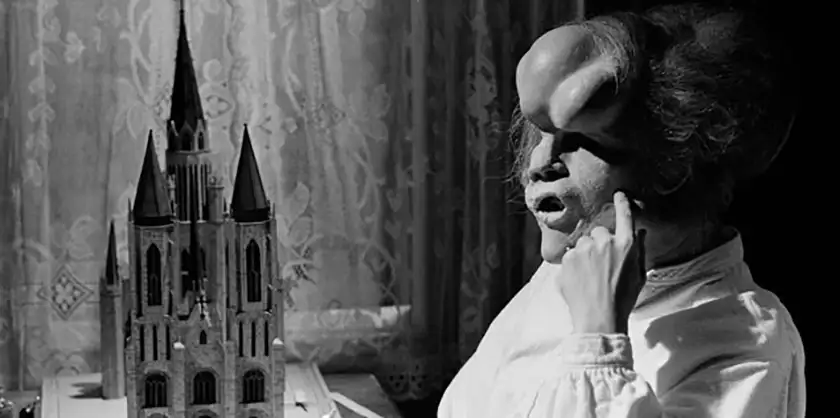
While his films do attempt to find the light even in the midst of darkness, Lynch also longs for a time where darkness is ultimately absent. Lynch famously stated that his first feature, Eraserhead, was his “most spiritual film,” refusing to elaborate any further. Attempting to unpack this statement may be a fool’s errand, but I cannot help but think it has something to do with The Lady in the Radiator’s “In Heaven” performance. After a series of struggles, Eraserhead’s protagonist has this song sung to him about a place where “everything is fine.” He hugs the woman, as a beam of light overtakes the screen. In his weird, distinctly Lynchian way, the director uses this odd scene to long for something truly transcendent.
One of the driving motifs in The Elephant Man is Merrick’s construction of a cathedral model. Merrick looks out of his hospital window to see the church, and begins building the model. In a space of confinement and oppression, Merrick deals with his demons by reconstructing a house of God, something that seems to give him purpose. While the film’s ending is undeniably sad, Lynch uses the final images for Merrick to take control of his own humanity.
Perhaps the most potent picture of this idea of longing comes at the end of Twin Peaks: Fire Walk with Me. Laura Palmer, in what is known as “The Black Lodge,” a space between worlds, sees an angel hovering before her. She smiles and even begins to laugh. She knows her ultimate fate is death, but happiness oozes from her face when she sees her guardian angel. The image is eerily beautiful, serving as some sort of solace for a character who has experienced so much agony. She sees the ultimate “light at the end of the tunnel.” With this scene, Lynch seems ultimately hopeful about the world beyond our own, and suggests that its ultimate peace is worth the trials and tribulations, the darkness, faced on Earth.
Lynch was raised as a Presbyterian, so it makes sense that certain Christian symbols would find themselves in his body of work. Angels, churches, and crosses are littered throughout his work, used often as a shining light in the dark worlds he so effectively created.
Finding Peace
In Blue Velvet, Jeffrey Beaumont asks, “why is there so much trouble in the world?” It’s a question Lynch asks in many of his films. Light and darkness coexist, leading to a balanced but still unfulfilling world. Lynch’s films contained his own mind and soul as he wrestled with religious and spiritual questions about the nature of reality, while longing for a place beyond that reality. As we continue to mourn his death, we can hope that he has found that peace.
Header Credits: AP Photo – Showtime

